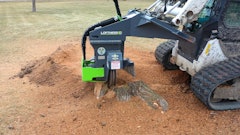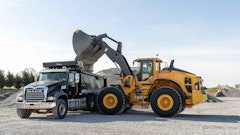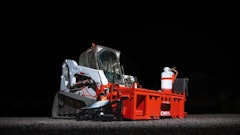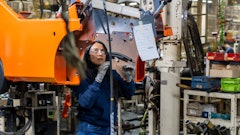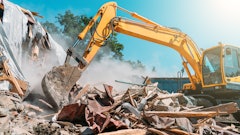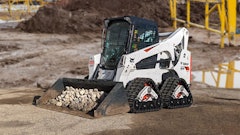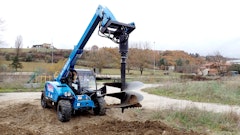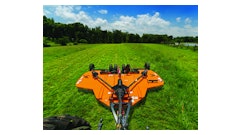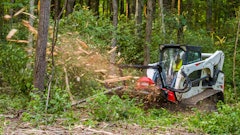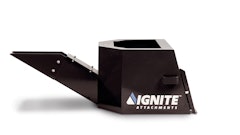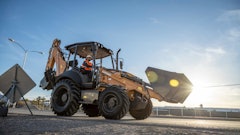The types of attachments available for construction equipment continues to achieve ever greater diversity. This wide assortment gives you the ability to perform multiple tasks using a single carrier (with the help of a quick coupler for easy attachment changeout), or to complete a single job using one carrier equipped with a tool precisely matched to the project and conditions. In some situations, an attachment can even make it possible to do a task using a smaller carrier rather than a larger, dedicated machine.
There are literally hundreds of attachments available — through both original equipment manufacturers and aftermarket suppliers — for carriers ranging from skid-steer loaders to wheel loaders, excavators to telehandlers, trucks to cranes. An assortment of these tools are featured in the pages of our 2007 Attachment Guide. To make it easier to locate the particular attachment you need, we have also broken them into categories based on the application.
Buckets continue to be one of the most common and frequently used attachments on any construction jobsite. Given the diversity of bucket types available, you can match yours to the task at hand based on capacity and width required. We offer suggestions on how to best match the bucket to the task in the article starting on page 34A.
Buckets are so popular, in part, due to the many accessories available. Various styles of couplers make switching between buckets and other attachments a one-person job that can be done quickly and easily, often without ever leaving the cab.
Bucket thumbs can also make it easier to grab bulky material that can otherwise be cumbersome to handle. Plus, with a variety of ground engaging tools (GET) to select from (see page 35A), you can easily pick through sand, clay or even rock.
Yet, buckets themselves are being designed to perform more than a single task. For example, the PicBucket from PowerTech is a multi-functional percussion bucket combining the power of a hydraulic hammer with the stripping strength and maneuverability of a conventional bucket. This enables you to perform demolition and debris removal using the same attachment. In addition, you can use it to rip, pry and break at different angles, which is something you can't do with a typical breaker.
Buckets have also become quite specialized, as seen in products such as the Gensco Grapner bucket/grab and the Felco milling bucket. The Grapner bucket/grab lets you mount the attachment to truck-mounted cranes to handle loose material. It can also excavate when suspended from a hydraulic boom. Felco's milling bucket incorporates a hydraulic milling unit into the back of the bucket. This enables it to break through and grind pavement, concrete, building foundations, rock and slate, as well as grind trees and landscape materials.
Beyond buckets
Of course, buckets and accessories are just the beginning of what you will find spotlighted in the 2007 Attachment Guide.
The guide offers the opportunity to learn how your peers in the construction industry are using attachments on their jobsites. The story on page 47A describes how Trucco Construction Co. in Ohio determined that an Atlas Copco hammer was actually a faster, more economical alternative to blasting through rock on a recent utility installation project. Using the attachment, the company was able to achieve average depths of 20 ft. on this $16 million+ job installing sewer line in Delaware County.
The 2007 Attachment Guide also features:
- a selection of material-handling attachments to help you move everything from brush and mulch to jobsite debris;
- demolition attachments that can provide the ability to pick and choose what to bring down, pick up, sort and load;
- roadbuilding attachments to enable you to properly prepare road base, as well as maintain the quality of the finished product;
- utility attachments to help you install pipe or lay cable quickly and precisely.
And of course, there's a "catch-all" section for those attachments that don't fit neatly into other categories, but are integral tools for adapting your equipment to jobsite conditions and operations.
With the number of attachments found throughout these pages, you're certain to find the ones to fill the bill for whatever tasks may lie ahead.











